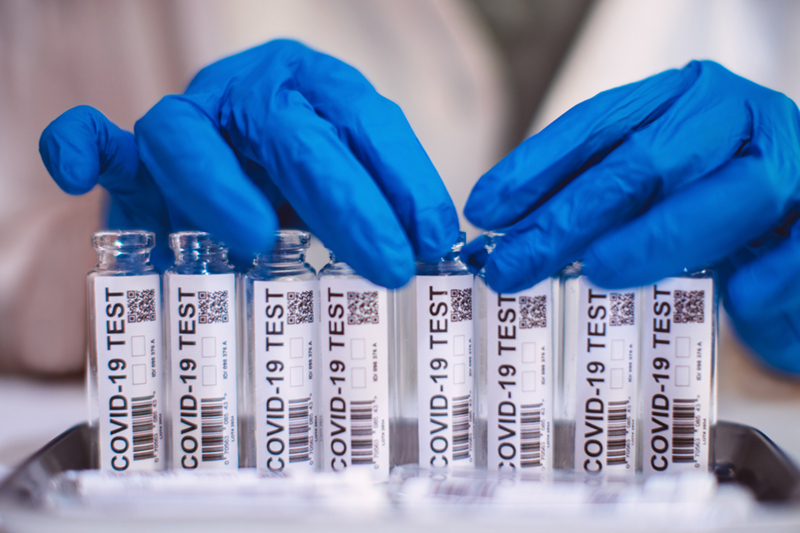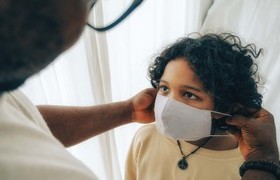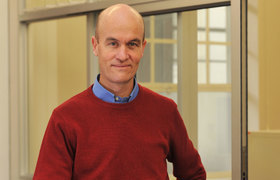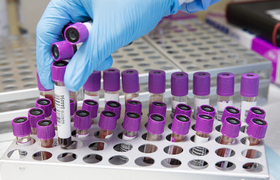Unpacking pandemic practices in computational science
14 October 2021 | Story Nobhongo Gxolo. Photo Getty Images. Read time 9 min.
Since the onset of the pandemic in 2020, the evolution of the work of Associate Professor Darren Martin, weaving in computational elements and delving into COVID-19 lineage, has contributed directly and indirectly to the advances made in researching the virus.
This interview with Associate Professor Martin, based in the Division of Computational Biology at the University of Cape Town’s (UCT) Department of Integrative Biomedical Sciences, and a member of the Institute of Infectious Disease and Molecular Medicine (IDM) at UCT’s Faculty of Health Sciences, is a round-up of some highlights and key learnings from his work since last year – including the importance of collaboration, and allowing oneself room to make mistakes.
Nobhongo Gxolo (NG): Since the start of the pandemic, you’ve published various papers on COVID-19 research. What are some of the important elements you’ve investigated, and how do these relate to one another?
Darren Martin (DM): There has been no planned thread; all my research has been reactive. Initially I was focused on debunking false claims relating to the genetically engineered (recombinant) origin of SARS-CoV-2, its supposed early diversification history, and later, the dogged refusal of many scientists to believe that natural selection was playing any role in the sequence of variants that were emerging.
My contributions to the various papers I have been on, besides writing much of the text, has been to test for evidence of natural selection impacting the mutation patterns seen in genomic surveillance data. With the B1.351 or Beta variant paper, for example, I identified the subset of mutations that it carried, which were most likely adaptive – so, mutations that had arisen and been favoured by evolution because they likely directly or indirectly increased the ability of the Beta variant to infect new individuals.
I think the discoveries of the Beta and Alpha variants were an example of how genomic surveillance data can be leveraged to help avoid serious upsurges of variants that are highly transmissible or able to break through immunity acquired from previous infections or vaccines.
“By the time we detect a new variant of any real importance … it will already have spread to other countries.”
NG: What is the genomic surveillance network, and what role does it play in your COVID-19 work?
DM: The Network for Genomic Surveillance South Africa (NGS-SA) comprises people from a series of laboratories around the country who have been working around the clock for the past 12 months trying to optimise genomic sequencing and the processing of genomic sequence data. They are trying to use this data to make real-time assessments of the continually changing sets of variants that are driving the pandemic. Ultimately, these laboratories – and their counterparts in other countries – are providing a global service that continuously identifies variants, assesses their potential danger, and determines what the best antigen sequences for updated vaccines would be.
NG: What are some of the standout findings you’ve unearthed?
DM: They are really quite simple – and I don’t take sole credit for anything I’ve found, since others have independently discovered most of the same things:
- Natural selection is indeed driving the emergence of new variants.
- SARS-CoV-2 is capable of a far higher degree of adaptive evolution than it was initially given credit for.
- Its adaptation is following unusually predictable patterns.
- It seems as though multiple different, independently arising lineages in many different parts of the world (or variants, as they are called in the press) are finding the same sets of evolutionary solutions, suggesting that the virus is capable of – very efficiently – finding optimal (or close to optimal) ways to continue infecting us and spreading between us.
NG: Have you developed any new computational techniques that are helping you advance your work?
DM: I’m mostly working on computational techniques to detect and analyse patterns of genetic recombination between variants. The tools I develop along with my students and collaborators are based on methods we developed years ago, for much smaller datasets than the ones we’re working with now. These ones are more computationally efficient, and so faster, while using less memory.
Although it may address a niche interest, I think this work is important because individual cogs are important for the functioning of a much bigger and more complicated machine. I tell my dad, a metal-working artisan, that I spend my days building and optimising a single very complicated cog!
NG: What is the impact of researching this in the local context? How is it applicable globally?
DM: By the time we detect a new variant of any real importance (one that evades our immune systems, or has increased transmissibility), it will already have spread to other countries.
It’s very important, though, that we are doing this research ourselves, and not relying too heavily on help from other countries. In South Africa we can determine the genome sequences of the new variants we find, analyse these genome sequences to shortlist ones that look as though they might be extra dangerous, and then conduct experiments in the laboratory to see if they really are as concerning a threat.
We’re able to do this fast enough to keep abreast of how these new variants arising or arriving here are going to impact our specific pandemic exit strategies. That said, it’s important to remember that there is no one-size-fits-all solution, even with vaccination.
NG: What are the lessons you’ve been able to draw from your work during this time?
DM: No one is an island – we all need to cooperate to get something constructive done. At UCT, Professor Carolyn Williamson, Professor Nicola Mulder (both principal investigators), Arash Iranzadeh (a PhD student), and Dr Marvin Hsiao (the principal investigator of the diagnostic virology group) have all been major participants in the genomic surveillance efforts of NGS-SA.
“The friction between opposing views of how the world works is where the best science happens.”
As has been the case with the COVID-19 pandemic responses of different countries, political divisiveness has been counter-productive in the scientific responses to the pandemic; whether related to the origins of the virus, the possibility that natural selection is at play in its evolution, or the efficacy of vaccines produced by this or that country, people care too much what others think. I’ve learned that it’s okay to be wrong – even scientists can make mistakes. I’ve learned that speaking up and saying why you think something is poorly thought out, especially without the shield of peer-review anonymity, is very constructive.
The friction between opposing views of how the world works is where the best science happens, and I think that this pandemic has done more than any event in history to embolden scientists to speak their minds. Conflict is great if one or both sides are prepared to concede in the face of mounting evidence that some of their ideas have turned out to be wrong.
NG: Your work is often collaborative, integrating different fields and working with expert colleagues from different spaces. Why is this important?
DM: No one is an expert on everything. Knowing who can do such-and-such a thing better than anyone else, and being able to get them to do that thing, is how all scientists should work. Training and upskilling have their place, because that’s how experts have cultivated their crafts; but when specialist things need doing in a hurry, you need to find the right people to do them.
We’re lucky in South Africa, and in the Western Cape in particular, that many of the techniques used to study SARS-CoV-2 genomic sequences were devised and developed locally in the early 2000s by people working at the University of the Western Cape, at Stellenbosch University, and here at UCT. As a result, we have a lot of ‘insider’ advantages when it comes to finding the best people to help us.
 This work is licensed under a Creative Commons Attribution-NoDerivatives 4.0 International License.
This work is licensed under a Creative Commons Attribution-NoDerivatives 4.0 International License.
Please view the republishing articles page for more information.










